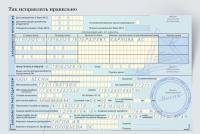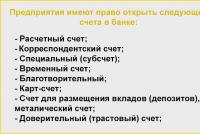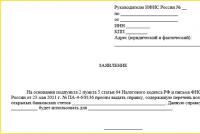Payment documents
For the convenience of payments using bank details, Sberbank has introduced the form of the PD-4 form, intended for individuals. This article will consider what the form is, its types, content and filling order.
The PD-4 receipt is used to make payments and is a document that confirms this payment. Most often, this receipt is used to process payments by depositing cash into the cash desk by individuals when paying for goods or services. This type of payment includes purchases made through online stores or through television programs.
Kinds
From 1993 to 2001, the form was the same for all types of payments made through Sberbank of Russia. Later, management decided to divide the receipt into several forms depending on the type of payment. This was facilitated by an increase in the number of payments made by people at the cash desks of the bank. The distribution was then somewhat chaotic and caused some delay. To simplify this procedure, the form was divided into three forms:
- "PD-4" for making payments to pay for purchases;
- "PD" for the payment of tax fees;
- "PD-4sb" for the payment of penalties, fines and other payments to the budget of the Russian Federation.
Forms of receipts "PD-4sb" and "PD" are considered equivalent. Both of them are suitable for payments made by individuals to budgetary institutions of the country. Form "PD" is considered newer, so it is often recommended by employees of the Federal Tax Service for paying taxes and state duties.
With these types of receipts, you can make the following payments:
- to the budget of the Russian Federation - UTII, personal income tax and others;
- to off-budget funds - medical insurance, pension contributions, social insurance;
- for payment of utilities - water disposal, heating, electricity, housing and communal services;
- for various communication services - telephone, internet, television;
- for goods purchased in the online store or teleshop,
- voluntary - charitable organizations;
- in favor of individual entrepreneurs without forming a legal entity;
- for the purchase of residential or non-residential real estate - to housing construction organizations;
- other receipts - court, registry office, etc.
Row values and receipt filling rules
Like any payment receipt, the PD-4 form contains many lines that contain all the information necessary to make a payment.
How to get a receipt:
- in a branch of Sberbank;
- download the form from the Internet and print;
IMPORTANT: When filling out a payment order by hand, according to the rules for filling out Sberbank payment documents, you can only use blue, black or purple pen ink. The same rule applies to filling out a receipt using computer technology. The cashier operator has the right to refuse to accept a receipt if it is filled out incorrectly.
A more convenient way is to download, fill out and print the form yourself, as there will be less chance of making a mistake when filling out.
You can use this link to fill out the online form and send it to the printer for printing. If you need to fill out the receipt manually, then on the same link you can immediately click "get the form" and print an empty form.
To fill out the receipt exactly as required by the bank, you should understand the information that is required to fill out. To do this, we will analyze each line with explanations that will help you correctly draw up the form without creating difficulties.
- Recipient- the name of the person to whose account the transferred funds of the payer will go is entered here.
- checkpoint- registration code. Here we are talking about the details of the organization in respect of which this payment will be made. The code is received by the organization in the tax authority, either at the place of registration of the legal entity or at the address of the location of its separate subdivision. The code has ten digits that should be entered in the corresponding line. You can find out the checkpoint code on the website of the federal tax service by specifying the name of the organization in the search criteria.
IMPORTANT: According to the order of the Federal Tax Service No. MMV-7-6 \ 435 of 2012, the registration code is assigned only to legal entities. The checkpoint is not issued to individual entrepreneurs. If the payment is made in favor of the individual entrepreneur, then you do not need to indicate the code.
- TIN- taxpayer identification number. It is issued to both individuals and legal entities upon registration with the tax office. The digital code is needed to organize all registered persons in tax databases. In this field you need to enter 10 digits of the corresponding code.
IMPORTANT: If the payment is sent to an individual entrepreneur, then the number of digits will be 12. This differs in that the identification number of the individual who founded it is applied to the IP.
- OKTMO- The All-Russian classifier of territories of municipalities has replaced OKATO (the All-Russian classifier of objects of administrative-territorial division). The number has from 8 to 11 characters and is indicated only if the payment is directed to pay fines, penalties and other payments credited to the budget of the Russian Federation. When paying for purchases or services, the OKTMO code is not indicated.
- R/sch- account number. It is necessary for legal entities to perform any actions related to monetary transactions. This account will receive money sent by payment cavitation by the payer. The current account number consists of 20 numbers and is one of the most important details for filling out payment receipts.
- Bank– this field contains its full name and address.
- BIC- bank identification code. It is considered a special requisite by which banking activity is determined. The code serves as an identifier for each bank, to identify them in a common network of interbank transactions. Using this code, it is easy to track the location of the bank. Banks receive each code from the Central Bank of the Russian Federation. It consists of 9 digits.
IMPORTANT: When filling out the receipt of the "PD-4" form online through the website, you can skip the "Bank" line and immediately enter the BIC. The system will automatically recognize the code and fill in the relevant information about the bank. The request does not always work correctly; after entering, check the automatically filled information.
- KBK- budget classification code. The line is filled in by the payer in the case when the payment is received by the budget of the Russian Federation. Such cases include payment of taxes, payment of fines.
- Cor. check- Correspondent account. It can be opened by banks both in the divisions of the Central Bank of the Russian Federation and in other banks. They are opened on the basis of a correspondent agreement concluded between banks. Its task is to reflect the course of ongoing operations (transactions) between the sending bank and the receiving bank. Consists of 20 digits. It is not necessary for the filler to know it. There are two ways to get this code. In the first case, the code is filled in by the operator - the cashier at the bank when accepting the receipt. In the second - when filling out the online form of a payment document on the site. This line is filled in automatically when filling in the field with the bank identification code.
- WIN— unique identifier of the accrual. It is considered an innovation in payment documents. Consists of 20 automatically generated digits. Required to identify the payment deducted to the budget of the Russian Federation. Most often used when paying traffic police fines. The number is not filled in by the payer. It is affixed either by the bank that accepted the payment order, or by the traffic police operators who accepted this payment notice.
- Purpose of payment- a line in which an explanation is entered explaining why this payment is made. When purchasing goods or services, you can leave the field blank. If we are talking about payments deducted to the budget of the Russian Federation (such as state duty or tax), then the name must be specified
- Payer— the person identifies himself as the person who made the payment under this payment order. It is necessary to enter the full surname, first name and patronymic.
- Payer's address— the address of residence of the payer is specified in the field.
- TIN of the payer- as in the line with filling in the taxpayer identification number for a legal entity, and for an individual - the system is the same. This certificate is issued to a person in the tax authority at the place of residence, which means that he is registered in the tax system. Depending on the payment, the TIN information may not be needed. So, when buying through an online store, the TIN is not indicated when filling out.
Important: If you need to indicate the TIN, but there is no certificate, then you can find out your taxpayer identification number on the official website of the Federal Tax Service. To receive, you will need to enter your passport data and the system will automatically issue the number attached to these details.
- Payer's account number. The person making the payment can indicate the number of his personal account in the payment order if he is going to make a payment not in cash through the bank's cash desk, but through a cashless payment, by debiting funds from his personal account. Such an account is opened between an individual and a bank. The Bank provides a service for accepting cash from persons as a deposit or contribution. In the second case, the bank can charge interest on the depositor's account for keeping his savings.
- Amount of payment- determines the total cost of the purchased product or service, down to kopecks.
- Commission of the bank- This is a payment for the service that banks take from their customers. Each bank sets its own commissions for certain services. Commissions can be fixed (in the form of an unchanging amount charged for the operation), or percentage (make up a certain part of the amount paid for the action). The payer does not fill in this field. When making a payment, a bank employee will independently indicate the commission for the payment service of the PD-4 form.
IMPORTANT: All of the listed data is often used when filling out other forms of receipts. You should carefully indicate the account numbers of the organizations to which the funds will be transferred.
The receipt is divided by a dotted line into two equal forms. They are both identical. The first form is called Notice", and the second " Receipt". They are filled in the same way and after the submission of the completed payment order, the cashier operator tears off the "Notice" part, and puts the bank's stamp on the second part and gives it to the payer. It serves as proof of the payment.
Payment documents
 For citizens of the Russian Federation, when paying according to a receipt of the PD-4 form, no documents are required. If the payment exceeds the total amount of 15,000 rubles, then according to the law, the payer is obliged to provide a document confirming his identity (passport). Representatives of other countries making a payment using this form, for any amount, must provide the cashier operator with a passport of a citizen of the country he is, as well as a certificate issued at a temporary place of residence.
For citizens of the Russian Federation, when paying according to a receipt of the PD-4 form, no documents are required. If the payment exceeds the total amount of 15,000 rubles, then according to the law, the payer is obliged to provide a document confirming his identity (passport). Representatives of other countries making a payment using this form, for any amount, must provide the cashier operator with a passport of a citizen of the country he is, as well as a certificate issued at a temporary place of residence.
Conclusion
The PD-4 form, introduced in 2001, optimized the work of banking services in the field of accepting payments from individuals. The ordered distribution of information on all items in the receipt made it possible to structure the processing of payments and reduce the time of transactions carried out on it. The form has a fairly wide purpose of payments deducted both to the budget of the Russian Federation and to the accounts of legal entities and individual entrepreneurs. Changes are made to the payment document in a timely manner to comply with modern payment requirements, which is well reflected in the quality of the service provided.






